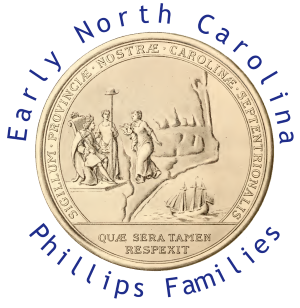Pyle's Massacre
From ENC Phillips Group Wiki
Template:Merge Pyle's Massacre, also known as Pyle's Hacking Match, was a battle that took place during the American Revolutionary War in Orange County, North Carolina (present-day Alamance County, North Carolina), on February 24, 1781, between Patriot and Loyalist North Carolina militia troops.
Contents
Background
Dr. John Pyle, Sr., a native of Chatham County, had previously fought against the colonial government in the War of the Regulation but did not serve at the Battle of Alamance. After the battle, however, Pyle responded to General Charles Cornwallis' call for Loyalists in the Revolution, and he served in the militia against the American Patriots as a colonel. After being captured, Dr. Pyle took an oath of loyalty to the Provincial Congress. However, with General Cornwallis' army encamped at nearby Hillsborough, Dr. Pyle gathered between 300 and 400 troops and sent a request to Cornwallis for an escort. Cornwallis sent Banastre Tarleton with his cavalry and a small band of infantry to escort these men.
At the same time, Lieutenant Colonel Henry "Light Horse Harry" Lee—father of Robert E. Lee—and Brigadier General Andrew Pickens were in the area with orders to harass the enemy. They had sent out scouts to locate Pyle's army. Upon learning of their location, they made plans to rendezvous with those forces with the objective of attacking Tarleton's dragoons and infantry, which would deal a major blow to Cornwallis.
At noon on February 24, Lee and Pickens captured 2 British staff officers and learned through interrogation that Tarleton was only a few miles ahead. In the waning hours of the day, Lee's Legion, who wore short green jackets and plumed helmets, encountered 2 of Pyle's men, who mistook them for Tarleton's dragoons who wore similar uniforms. Lee used this confusion to his advantage and learned that Pyle's army was located nearby. Lee's troops trotted into the camp in full salute. Lee exchanged customary civilities with Colonel Pyle and began shaking his hand when the sounds of battle commenced.
Battle
The most commonly accepted account of the battle, pieced together from reports from Lee and Captain Joseph Graham, indicates that Lee's deception was purely chance, and that he had originally intended to avoid the Loyalists, intending instead to encounter Tarleton's Dragoons, the more important objective. The sounds of battle apparently commenced when the militia at the rear of Lee's Legion, recognizing the strips of red cloth on the hats of Pyle's men as the badge of Loyalists, alerted Captain Eggleston, who was new to the South and was not familiar with local Whig and Tory badges. When he asked one of the Loyalists which side he was on, the man replied "King George," and Eggleston responded by striking him on the head with his sabre. Seeing this, the militia joined in the attack. The Loyalists, believing the attack to be a mistake, continued insisting they were on King George's side, to no avail. After 10 minutes, the remaining Loyalists had fled, and ninety-three Loyalists were known to be dead, certainly more were wounded and others were seen being carried off by friends. According to local legend, John Pyle was badly wounded in the battle and crawled into a nearby pond where he concealed himself until he could be rescued. After recovering from his wounds, he surrendered to the local militia. Later they were pardoned as a result of Pyle's care for wounded patriots.
Aftermath
Lee's and Pickens' ultimate goal of encountering Tarleton was foiled when Tarleton received orders on the night of February 24 ordering him to return to rejoin the main army. Though pursued, Tarleton eventually got too close to the main British army for Pickens and Lee to attack safely.
The British were quick to denounce the massacre. Cornwallis, in a letter to Lord George Germain, reported that most of Pyle's force were "inhumanly butchered, when begging for quarters, without making the least resistance."
The battle occurred a few weeks before the Battle of Guilford Courthouse and was a contributing factor in weakening British troop numbers and morale as that battle approached.
As late as 1850, local residents could point out the location of the battle and of the mass graves of those killed during the skirmish; at least one alleged known mass grave has been recently relocated. The site is marked with periwinkle and cedar trees and at one time had a stone marker (placed in 1880), which has since been removed from the site; the marker's current location is unknown.
External links
- Our Pyle Line - A family history of the Pyles that includes an account of Pyle's Massacre written by Dr. George Troxler of Elon University.
